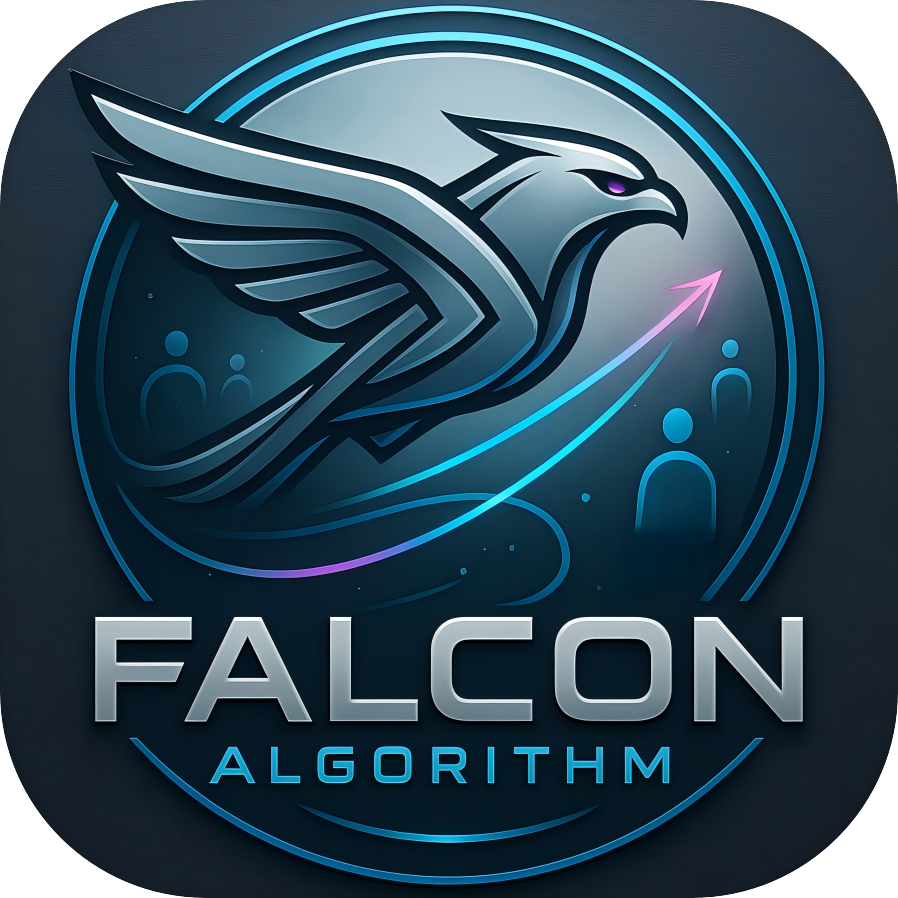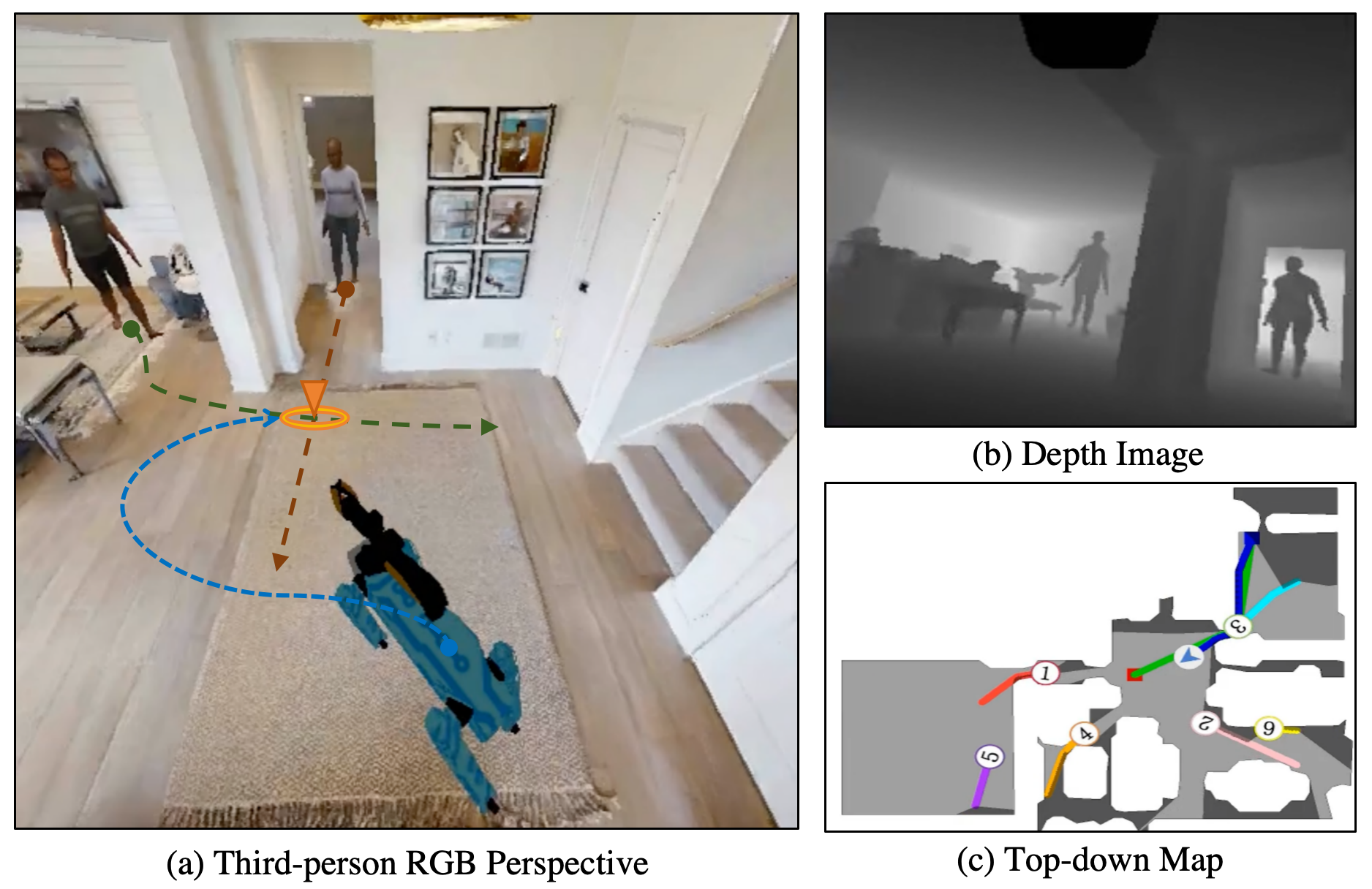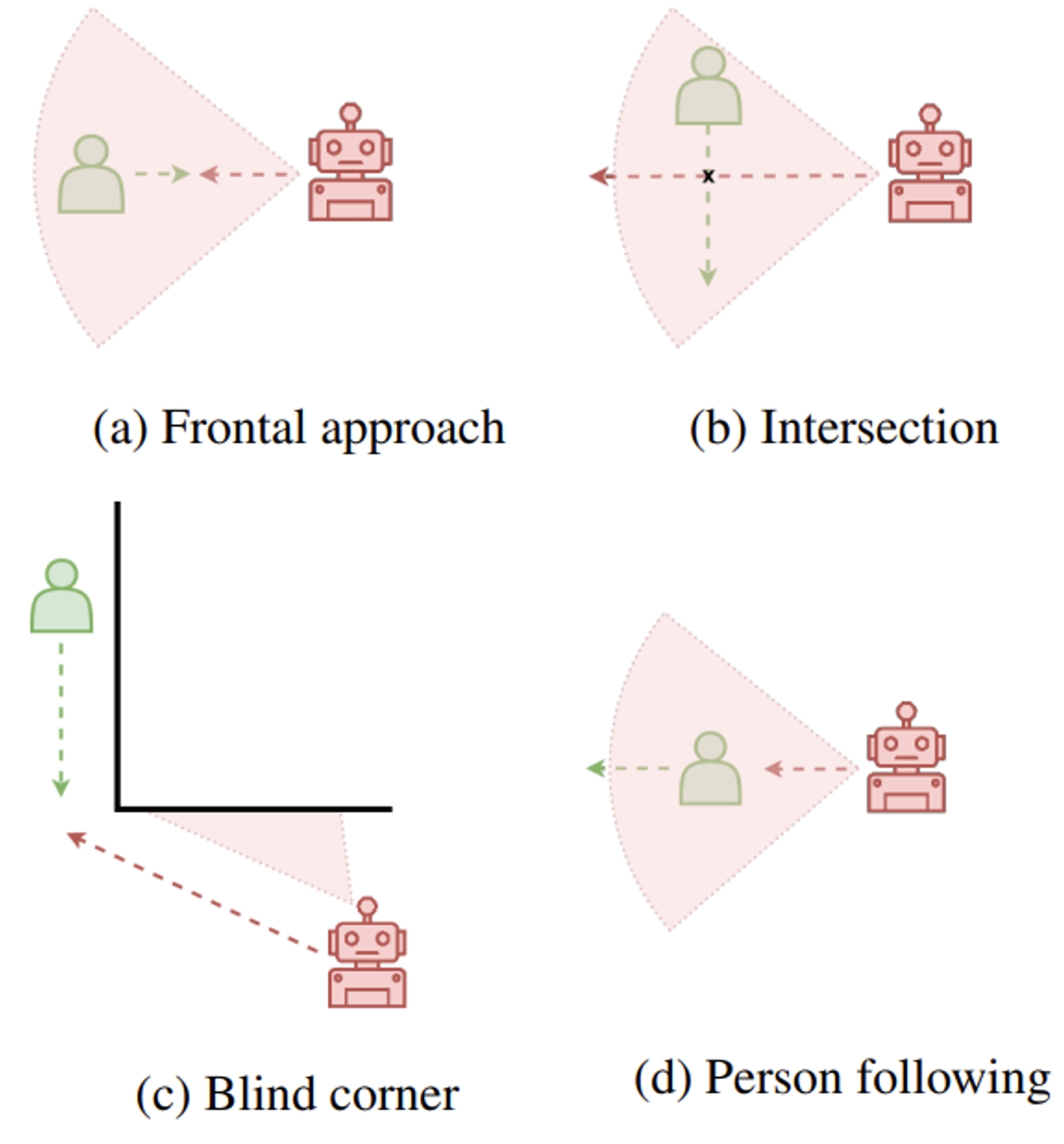


We integrate trajectory prediction into the SocialNav task.

Falcon Overview.

Benchmark Overview (Social-HM3D & Social-MP3D).

We show our method on four classic categories of encounters for SocialNav (inspired by Cancelli et al. [1] and Pirk et al. [2]). Each encounter displays three videos from each of our two datasets (Social-HM3D & Social-MP3D).

The four different classes of encounter. The dashed line represents the general direction of the agent and the person involved. The red area represents the agent’s field of view at the beginning of the encounter.
In this case, the robot and a human are approaching each other from opposite directions.
Our method uses 'Step Aside' to maintain a safe distance or 'Predictive Shift' to proactively avoid potential collisions by predicting the human's path.
In an intersection encounter, the robot and human paths cross each other.
Our approach utilizes 'Early Pass' to pass ahead when it is safe, 'Predictive Bypass' to adjust its path based on the predicted movement, or 'Proactive Yield' where the robot either stops to let the human pass or senses it is in the way and moves aside to yield the path to the human.
This occurs when visibility is limited, and the robot may encounter a human unexpectedly.
Our method involves 'Proactive Avoidance' when a human is detected to safely move aside, or 'Reactive Sidewalk' to instinctively walk closer to the side when visibility is low.
This encounter occurs when a human is in the robot's path.
The robot either 'Brief Tail' until the human leaves its path or 'Follow & Overtake' when the human remains in its way.
@misc{gong2024cognitionprecognitionfutureawareframework,
title={From Cognition to Precognition: A Future-Aware Framework for Social Navigation},
author={Zeying Gong and Tianshuai Hu and Ronghe Qiu and Junwei Liang},
year={2024},
eprint={2409.13244},
archivePrefix={arXiv},
primaryClass={cs.RO},
url={https://arxiv.org/abs/2409.13244},
}
[1] Cancelli, Enrico, et al. "Exploiting Proximity-Aware Tasks for Embodied Social Navigation." Proceedings of the IEEE/CVF International Conference on Computer Vision. 2023.
[2] Pirk S, Lee E, Xiao X, et al. A protocol for validating social navigation policies[J]. arXiv preprint arXiv:2204.05443, 2022.